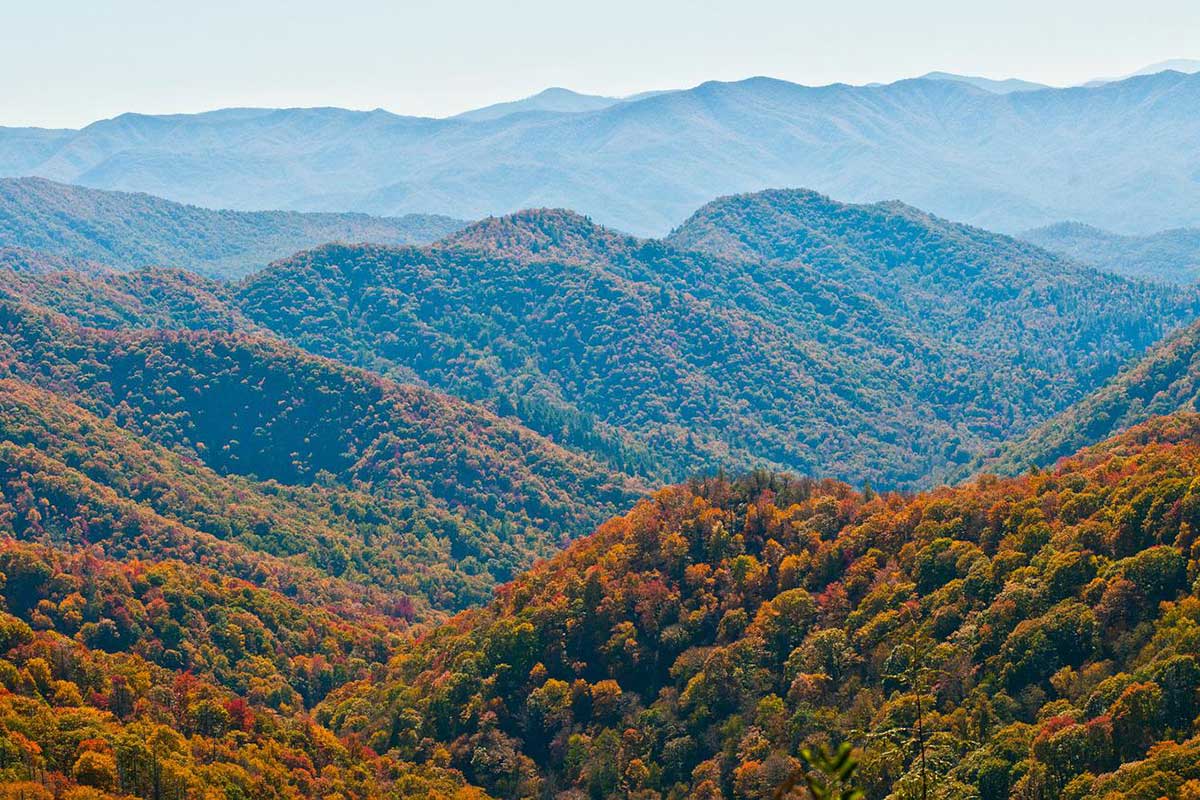The Great Smoky Mountains National Park is an outdoor-lovers paradise offering various hiking trails, wildlife viewing, and scenic drives. You can also venture to Clingmans Dome, experience the Appalachian Trail, and get in touch with pioneer history. There’s no wonder it’s the most visited national park in the U.S., totaling over 14.1 million visitors in 2021.
While there are peak visitor seasons, everyone finds a different reason for exploring the national park during different months. So, what is the best time to visit the Smoky Mountains? It depends on what experience you are looking for. Read on to learn more about when to take a trip to the Smokies.
Best time to visit the Smoky Mountains
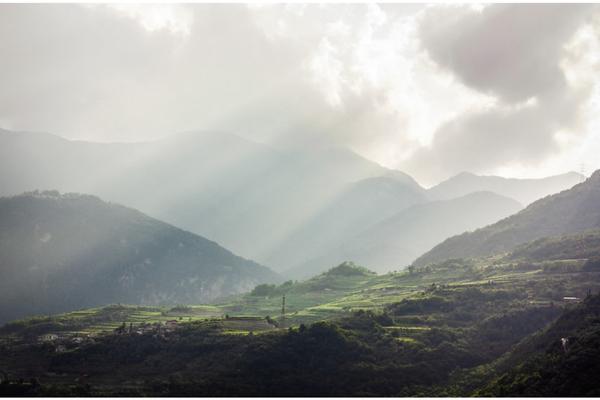
The Great Smoky Mountains National Park is open year-round and offers a different adventure in every season. Although summer and fall are two popular times to visit, you’ll want to make sure it’s offering the right experience you seek. Read on to learn more!
The smoky Mountains in the Spring
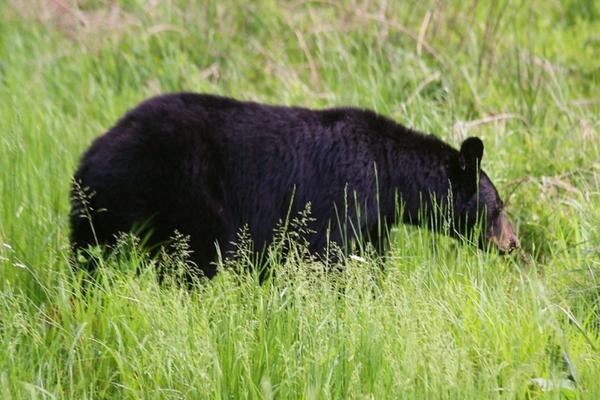
Spring is a great time to visit the Smokies for anyone wanting to view the abundance of wildflowers blooming in the meadows. Wildlife is also starting to wake up from its winter dormancy in early spring. It is considered to bear season since you are likely to see bears emerging from their dens with their cubs.
Weekend rates are typically higher with in-state visitors but you can generally find lower lodging rates during the week. Overall, if you want some nice weather before the summer crowds, spring is a great time to visit.
Weather
March has unpredictable weather with the possibility of some snow or ice still around in the mountains. Expect temperatures to be around the 60s during the day and 40s at night. April and May will have warmer temperatures but can also see a bit of rain, so make sure to pack wet weather gear for your trip. May temperatures can rise into the 70s and 80s during the day.
Spring Activities
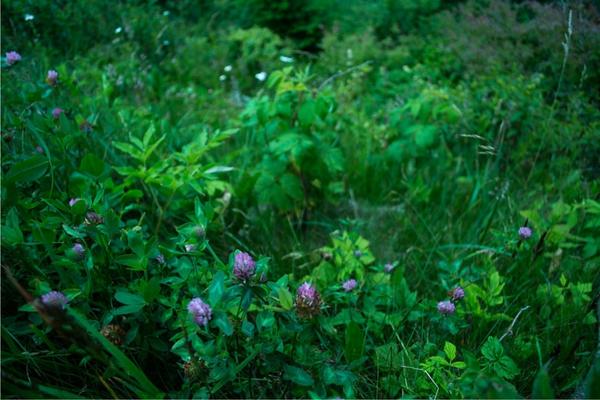
The park gets its nickname “Wildflower National Park” because there are over 1,500 different flowering plants blooming during the spring. Some mountain roads may still be closed in March because of ice or snow. However, the lower elevation trails will be open for you to enjoy an invigorating early spring hike. Popular trails to see wildflowers include:
- Schoolhouse Gap Trail
- Gregory Ridge Trail
- Little River Trail
- Porters Creek Trail
With National Park Week falling in April, you can expect special events and activities at the park. The park also hosts the Spring Wildflower Pilgrimage – a weeklong festival with art demonstrations, photography classes, and nature walks. During the late spring, you’ll want to explore the various waterfalls that are full following the snowmelt. These include:
- Ramsey Cascades
- Rainbow Falls
- Abrams Falls
The smoky Mountains in the Summer
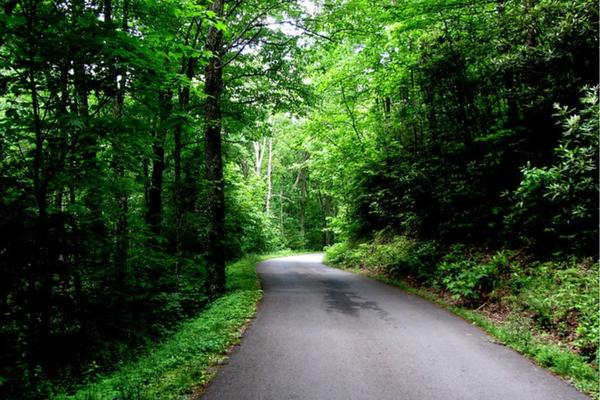
June through August is one of the best times to visit the Smoky Mountains, but its popularity also means more crowds. This includes packed hiking trails and a lot of road traffic on routes, such as the Newfound Gap Road, Cades Cove Loop, and Roaring Fork Motor Nature Trail. However, it’s the best time of year for anyone wanting to enjoy water-based activities and access to all the attractions and hiking trails the park has to offer.
You’ll want to make your lodging bookings up to a year in advance to ensure availability and expect higher rates compared to other seasons.
Weather
The temperatures in lower elevations can reach the high 80s and 90s during the day. However, evenings are comfortably cool at around the 60s to 70s. While it isn’t as humid in the Smokies compared to other parts of the states, you can expect some haze and afternoon thunderstorms.
Summer Activities
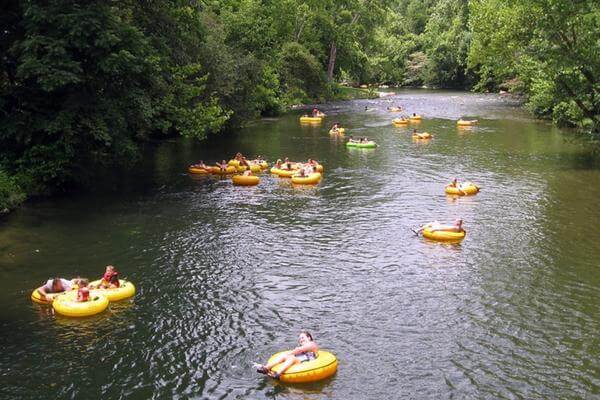
The hotter weather gives you access to plenty of outdoor activities, including water-based ones. Most people visiting in the summer will go fishing, boating, whitewater rafting, tubing, ziplining, horseback riding, and tackle the hiking trails. It’s best to plan your hikes in the mornings to avoid the mid-day heat. There are typically no closures in the park during the summer, giving you access to all the hiking trails, campgrounds, visitor centers, and historical sites.
With July being the busiest month of the year, you can try visiting less popular locations to avoid the crowds. These include Balsam Mountain, Abrams Creek, and Foothills Parkway. There are also still some chances to see wildflowers during the summer.
The smoky Mountains in the Fall
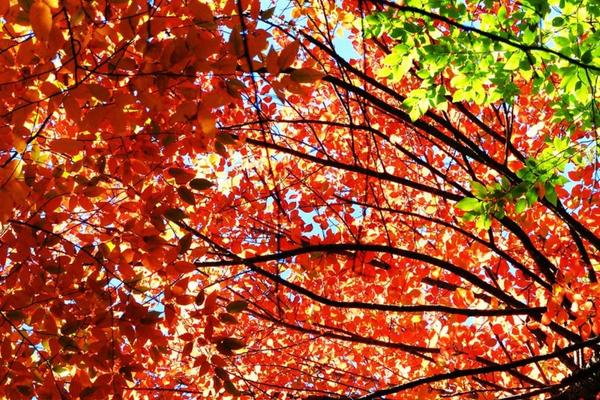
Fall is another popular month to visit the Great Smoky Mountains, especially if you enjoy cooler weather and want to view the stunning fall foliage. Fall colors begin emerging on the trees in mid-September when lodging rates also dip. In October, crowds will begin again at the peak of fall colors, and lodging rates will spike on weekends. Expect great deals once November comes around and the weather is colder.
Weather
The weather is still warm in September, with daytime highs in the 70s and 80s and cooler nights in the 50s. In October, it gets cooler at night, but the temperature doesn’t significantly drop until November, with near-freezing temperatures and the possibility of snow in higher elevations. Overall, you’ll want to bring a jacket and wear layers during your fall visits.
Fall Activities

September and early October offer nice conditions perfect for biking, hiking, and taking scenic drives through the park to see the fall foliage. It is a great time for experiencing wildlife activity, including bears roaming around the Cades Cove area. Fall also marks the start of monarch butterfly migrations and the elk rut on the North Carolina side.
To avoid the October weekend crowds, plan your trip during the weekdays. Also, be aware that there may be some road closures in the park’s higher elevations due to the start of snow falling in November. If you are staying in nearby Gatlinburg or Pigeon Forge during your visit, the following attractions offer amazing views of the park’s colorful fall foliage:
- Great Smoky Mountain Wheel at The Island
- Anakeesta
- Gatlinburg SkyLift Park
The smoky Mountains in the Winter
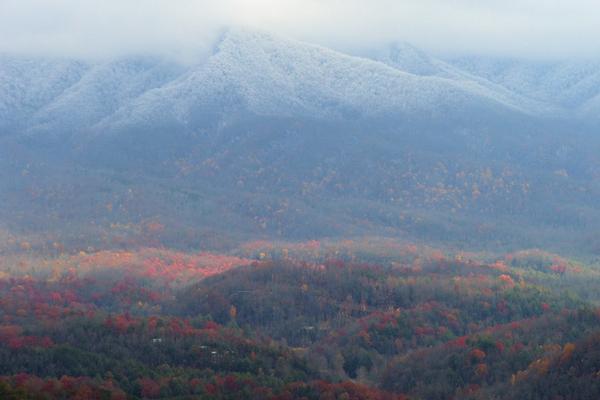
Except for the Christmas holidays, the winter months of December through February have the fewest visitors and the lowest lodging rates. It is perfect for anyone who enjoys the snow and wants to experience the peaceful stillness of the wilderness. While some roads, trails, campgrounds, and historical attractions are closed during the winter, you can still explore the beauty of the park from a different perspective.
Weather
Daytime temperatures in the winter are around the 50s and nights get as low as below freezing. Conditions are typically moderate, however, you can experience some extreme weather changes in the higher elevations. While it snows in the mountains starting in November, the months with the most snowfall at all elevations are January and February.
Winter Activities
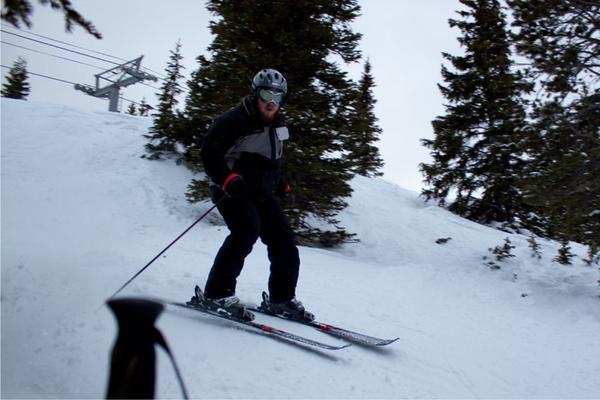
You can still hike the mountains during the winter, including seeing some of the beautiful frozen waterfalls throughout the park. Some popular winter hikes include Mt. Cammerer Lookout Tower and Laurel Falls Trail. It is also easier to see wildlife still active in the winter, such as deer, since there are no leaves on trees blocking your view. However, make sure to stop at the visitor center when you arrive to get updates on trail conditions and closures in the park.
Some great spots to see snow in the park in January and February is at Newfound Gap, Clingmans Dome, and Mt. LeConte. Regardless of how much natural snow is available, you can always go snowboarding, skiing, and snow tubing at Ober Gatlinburg. December is also a great time to visit the nearby towns of Pigeon Forge and Gatlinburg since they are decorated with Christmas lights and offer plenty of holiday events.
